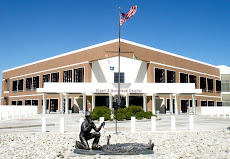The Center for Disease Control (CDC) offers these tips for dealing with the extreme summer heat we have here in Morongo Basin. A few minutes reading this article can save your life or the lives of those around you!
What happens to the body as a result of exposure to extreme heat?
People suffer heat-related illness when the body’s temperature control system is overloaded. The body normally cools itself by sweating. But under some conditions, sweating just isn’t enough. In such cases, a person’s body temperature rises rapidly. Very high body temperatures may damage the brain or other vital organs. Several factors affect the body’s ability to cool itself during extremely hot weather. When the humidity is high, sweat will not evaporate as quickly, preventing the body from releasing heat quickly. Other conditions that can limit the ability to regulate temperature include old age, youth (age 0-4), obesity, fever, dehydration, heart disease, mental illness, poor circulation, sunburn, and prescription drug use and alcohol use.
Who is at greatest risk for heat-related illness?
Those at greatest risk for heat-related illness include infants and children up to four years of age, people 65 years of age and older, people who are overweight, and people who are ill or on certain medications.
What is heat stroke?
Heat stroke is the most serious heat-related illness. It occurs when the body becomes unable to control its temperature: the body’s temperature rises rapidly, the sweating mechanism fails, and the body is unable to cool down. Body temperature may rise to 106°F or higher within 10 to 15 minutes. Heat stroke can cause death or permanent disability if emergency treatment is not provided.
What are the warning signs of a heat stroke?
Warning signs of heat stroke vary but may include the following:
• An extremely high body temperature (above 103°F)
• Red, hot, and dry skin (no sweating)
• Rapid, strong pulse
• Throbbing headache
• Dizziness
• Nausea
• Confusion
• Unconsciousness
What should I do if I see someone with any of the warning signs of heat stroke?
If you see any of these signs, you may be dealing with a life-threatening emergency. Have someone call for immediate medical assistance while you begin cooling the victim. Do the following:
• Get the victim to a shady area.
• Cool the victim rapidly, using whatever methods you can. For example, immerse the victim in a tub of cool water; place the person in a cool shower; spray the victim with cool water from a garden hose; sponge the person with cool water; or if the humidity is low, wrap the victim in a cool, wet sheet and fan him or her vigorously.
• Monitor body temperature and continue cooling efforts until the body temperature drops to 101-102°F.
• If emergency medical personnel are delayed, call the hospital emergency room for further instructions.
• Do not give the victim alcohol to drink.
• Get medical assistance as soon as possible.
Don’t be afraid to dial 911 if you think the person needs immediate medical care! Minutes count and hesitating to call for help can endanger a person’s life. Stay cool and stay safe!
Friday, June 26, 2009
Subscribe to:
Post Comments (Atom)


No comments:
Post a Comment